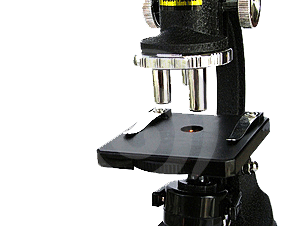Direct count
 So, you have collected 5 litres of water. Back in the lab, you put a sample on a slide under a microscope, and counted everything that looked like a Vibrio. That's certainly one way of quantifying the population. We'll call it ... Direct Count. Pretty easy, conceptually speaking, although it takes a bit of time to make the slide, and even more time to actually count.
So, you have collected 5 litres of water. Back in the lab, you put a sample on a slide under a microscope, and counted everything that looked like a Vibrio. That's certainly one way of quantifying the population. We'll call it ... Direct Count. Pretty easy, conceptually speaking, although it takes a bit of time to make the slide, and even more time to actually count.
OK, so you've tried counting using a Petroff Hausser chamber under the light microscope, but you can’t see anything that resembles a bacterial cell. What does that mean?
A less experienced lab technician might run off to tell the doctor that the water is all clear and the oysters must have been contaminated by one of the kitchen staff who handled the oysters. Not you, however, because you remember that, although this method is quick, the volume of the sample on the microscope slide is very small. This means that you will only see cells under the microscope if the concentration is high (typically more than 100,000 –1 million cells per mL). If the number in the water was this high, the water would actually look cloudy and no-one would have harvested those oysters!! There is another problem. Under the microscope some of the bacteria were swimming around, but others were not moving. You wondered if that meant they were dead, but how could you tell?
Copyright University of Maryland, 2007
You may link to this site for educational purposes.
Please do not copy without permission
requests/questions/feedback email: mathbench@umd.edu